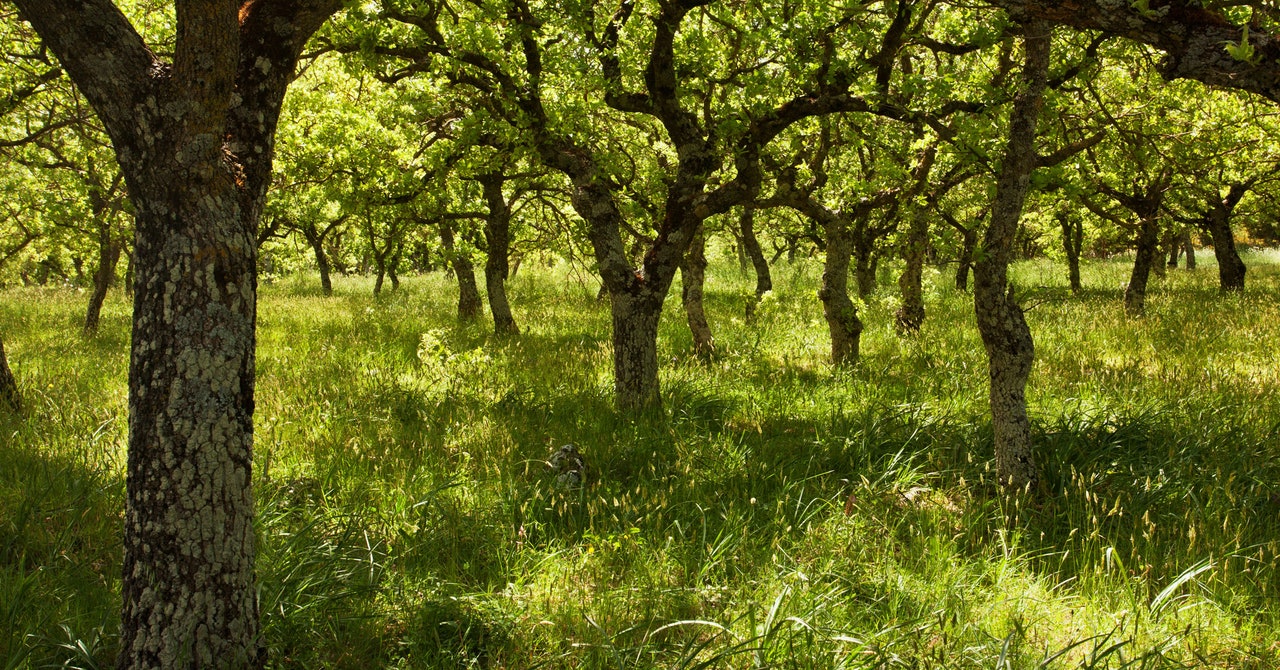
The team’s test plots also host some of Jordan’s rarest flora. In Marka, that includes saplings of Pistacia lentiscus, the wild pistachio tree—there are only about 50 left in the wild in Jordan—and Celtis australis, sometimes called a European hackberry, which is even more rare.
However, not everyone is convinced these small-scale forests will help ease Jordan’s environmental problems. Climate change is already making the country hotter and more arid—and in ever greater need of forest restoration. Currently, only about 1 percent of Jordan is still forested, and even those areas are under threat from wildfires, livestock grazing, and illegal logging. Nizar Obeidat, who specializes in forest and rangeland research with the Jordanian National Agricultural Research Center, says that the Miyawaki method is not suited to reforesting the country in any practical way. The method is “very costly because you use a small area with high density and some manipulation with the soil using straw and manure,” Obeidat says.
The greatest benefit of the tiny urban forests that Assaf and Motoharu’s team are planting may be in raising awareness of the value of green spaces in urban areas among both ordinary citizens and people in power. “You have to raise a proper generation in order to have these meaningful projects,” says Dana Mismar, a volunteer on the team. “And the government should invest in this. It is the most important thing. What is more important than losing a plant that will not be here anymore?”
Assaf echoes the sentiment. “Today, we are so disconnected from the native ecology. It’s like this foreign issue,” she says, citing the local knowledge of plants that has been lost. “For me, it is about reweaving the native ecology into the urban fabric, people’s lives, and their memory.”
She thinks about the potential of city kids recognizing and valuing plants, such as the valonia oak, Jordan’s national tree, even if they’ve never left Amman. “It will become a part of their memory, and this really excites me, because we cannot protect what we do not care about and love, and we cannot care and love something that we do not know,” Assaf says.
Part of Assaf and Motoharu’s effort involves establishing partnerships with local nurseries. Fadwa Al-Madmouj, a 25-year-old volunteer and agricultural engineer at a nursery in the south of Amman, has been instrumental in researching different ways to propagate Jordan’s native plants. In 2019, during the nursery’s first year of working with Assaf and Motoharu, it grew around 15 different local species. Today, that number is around 50—and, just as importantly, customer interest is also growing.
“My first year in the nursery, people were laughing about native plants,” says Al-Madmouj. “Now we have a big group that loves natives. They bring friends, they bring the family to buy native plants.”
The Marka project, says Al-Madmouj, “is a small forest, but it gives a message to people: ‘See, we can do it, and you can too. And together we can do something.’”
More Great WIRED Stories


